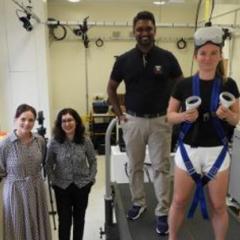This article was written by Karina Carvahlo first appeared on ABC Brisbane.
When we put the call out for audience submissions for Curious Brisbane, we were inundated with questions But there was one in particular that kept popping up.
"Why is the Brisbane River so brown? Has it always been like this?" Brisbane resident Calum McKinnon asked.
It's had creative monikers such as the "brown snake" for its long, winding path and murky colour.
And while they're similar lengths, London's River Thames is considered one of the cleanest in the world, but the same can't be said for the Brisbane River.
While the experts agree on the reasons behind its murky colour, they disagree on whether it's always been brown and whether it can ever be blue.
Let's start with the "why" and break it down into three simple reasons:
1. It's an estuary
By its very nature, the Brisbane River is brown because it's an estuary and influenced by the tide.
Water flows from the catchment upstream, bringing sediment with it and as the tide comes in from the opposite direction, it causes a lot of turbulence in the water, continually stirring up the sediment.
"Once the sediment is generated into the river, then you get this constant resuspension of sediment just because of the nature of the river itself," Dr Paul Maxwell, principal scientist at Healthy Land and Water, said.
So the fine particles of dirt and mud that make up the sediment never get a chance to settle.
2. Urbanisation
Brisbane has changed dramatically since colonial settlement, and so too has the river.
Erosion from legacy clearing over the last century and a half has caused destabilisation in the water channel, increasing the amount of sediment.
The city's heavy rains add to the sediment again as run-off from hard surfaces like roads and roofs enter the river.
After storms, the river will appear browner than usual because of the extra dirt flushed into it by the rain.
3. Dredging
In the 1860s, work began to dredge the river mouth to allow big ships through to the city and beyond.
The river bed was just 1.5 metres deep, and it was possible to walk from one side to the other.
By 1900, it was six metres deep and now it's about 15 metres deep.
Dr Maxwell said the dredging exacerbated the tidal influence.
"Back in the 1800s it was around about Breakfast Creek so only about 12 or so kilometres upstream," he said.
"Now [it's] all the way up at Ipswich. So there's a significant change in the hydrology of the river."
Brown doesn't mean it's bad.
While the river is dirty, Dr Maxwell stresses it's cleaner than it has been.
"Just because it's brown it doesn't mean it's polluted [or] that it's dangerous necessarily for humans to contact."
That's a legacy from when industry used the river as the city's drain.
Historically, meatworks would dump fat and offal in the waterway. There was waste from fertiliser and paper plants. And Paul Maxwell said blanket factories were particularly bad offenders.
"They used to discharge the dye from the dye pits out into the river so you could tell the day of the week by the colour of the river."
Was the river ever clear?
Experts are split on this one. As we scanned the ABC archives we came across a story from 1990 on the health of the river.
As the reporter's voiceover remarked: "Old timers recall seeing a clean, clear stream and being able to see objects three metres underwater," they said.
"They remember relaxing on clean, sandy beaches and swimming uninhibited by fears of pollution."
Coastal engineer Jesper Nielsen said those reports were true.
"From an engineering perspective, if we reflect on how the river used to be before engineers essentially came in and changed it so much, it would have been blue," he said.
Dr Maxwell was circumspect, "It's very unlikely to have ever been that blue colour," he said.
"You've got nutrients coming through with sediment, it's going to go from brown to green.
"So when we get floods, it goes a little bit brown and in the dry time over winter we go green."
Can the river ever be blue?
Jesper Nielsen firmly believes the answer is "yes" — he's close to completing his PhD which looked for a solution to the river's brown colour.
"Surprisingly there's actually sand in the middle of the river and the mud is all on the mud banks and it's this mud that gets re-suspended continuously by the tide, giving the river its brown colour," he said.
He said the cure laid with the river's mudbanks and a native freshwater plant.
Bacopa monnieri sprung up along the river after the 2011 floods and despite the saltier conditions, it took to the river's muddy shores with earnest.
Mr Nielsen and his team have been replanting the bacopa in Jindalee.
"These plants will help keep the mud here [on the banks] so the river will put the mud onto the mud banks — we'll work to plant these plants, keep the mud here and the river will clear itself up."
He has an ambitious timeframe.
"If I can get a team of people not afraid of the mud and hard work we could get the river blue in four years, maybe less," Mr Nielsen said.
"It would be a small army. Maybe 10 to 15 people."
Dr Maxwell applauded the engineer's efforts but doesn't believe it will work.
"It's very ambitious. I think the work they're doing is fantastic," he said.
"I think the impact on the river is far greater than the sediment that's on the side of the river itself.
"We've got big issues in the upper catchment and the legacy clearing."



